Baja consists of teams of students from different universities and colleges, design and built an off-road buggy (small off-road cars). There are fixed rules and regulations for the construction of buggy. This ATV is based on a 305cc Briggs and Stratton Intek 20 single cylinder engine, which is capable enough to deliver 10 hp power. Torque for each buggy varies according to the transmission and gearbox used for the particular vehicle. The primary target of Baja is to design, build and race an off road buggy according to the rules mentioned in the rule book and at the same time, it could withstand the harshest elements of rough terrain.

Virtual Baja
It is the first big step to participate in the Baja competition. In order to compete, students has to register in SAE and their college must have an active SAEINDIA Collegiate Club. After the initial registration, the team members along with the guide (SAE registered faculty from the college) has to finalize and design a CAD model. After the approval among the team, the CAD model has to be analyzed using Ansys software to calculate the stress and strain of the CAD structure.
Virtual Baja will usually commence 5 months before the final event. Representatives from SAE and leading engineers from the automotive sector will be posted as judge and approving committee. A group of 5 to 6 students from a single Baja team is allowed to participate in the Virtual competition. The group has to deliver a powerpoint presentation on the virtual Baja model they had developed. The group must be well equipped to answer all sorts of questions from the jury. One can expect questions from the basic engineering to latest technological trends. Most of the questions will be based on the CAD model they are representing. According to the rule book, one or two innovation from the students should be included in the design of Baja vehicle. Virtual Baja is considered to be bit easier for the debutants, as the level of scrutineering will be lighter when compared to the second timers and so on. A good volume of team is lost in the filtration at Virtual Baja.
The Team
According to the rule book, one single team is allowed to participate in the Baja from a college with a maximum of 25 students in one single team. Each team should be headed by a team captain and vice captain. For convenience and smooth functioning, the team should be split according to the skill and interest of the team members. So that, captain can assign duties to each sub-team in the areas of buggy designing and construction. Each and every team must have two guides from the college faculty in order to maintain a decorum in the team. Rule book also assigns the duties of a guide. He or she should be with the team from the Virtual Baja to the main event as the backbone.
The initial team usually consists of the core designing people only. The success of Virtual Baja remains in the hands of this team as their performance will decide the fate of entire team. By keeping design and technical team aside, the most important of all is the driver and co-driver. The end result of the project lies within the hands of the drivers. One wrong move from the driver kills all the hard work of months. Like the main driver, co-driver too is equally important as one can't predict when he/she will be in action. In motorsports nothing can't be predicted. The team generally divided into technicians (skilled welders, polishers and craftsman), electricians, painters and quality checkers.
How to build a buggy car
From the drawing board, the works are handed over to technicians at the floor. From the design, base platform is first made. The main chassis of the buggy is a roll cage. It is made of high strength carbon steel tubes. All the edge profiles are welded with high quality TIG welding. The strength of the buggy lies on the quality of the weld. The roll cage construction starts from the base platform and starts building upwards with accurate jigs and fixtures.
During the roll cage construction, we have to make sure about the fitment of all mechanical components associated with the buggy. It is considered to be a good platform to develop some manufacturing skills for the students and also to exploit the practical knowledge as well. Cost Report is one of the most important event that took place just before the main event. So, it should be kept in mind during each stages of the work so that, documentation will be easier at the end. A serious inspection should be done after each and every weld is made, also cross check the dimensions.
Once the roll cage is completed, raise the whole body to the actual height of buggy. It will helps in installing the suspension system. Being an off-road vehicle, suspension is considered to be the core part of the vehicle. Most of the team adapts the suspension system of on-going production ATVs as this suits best for the buggies. Suspension system is one such department where one can innovate many ideas. Innovations with solid proof and backups are even honoured at higher levels. Double wishbone with hydraulic shock absorbers are often used here. The suspension travel of the buggy depends on the stiffness of the spring used.
After assembling all four suspension system, wheel hubs are placed along with the disc and calipers for braking. Assembling of stub-axle is another serious step, related with wheels. Brake fluid lines are also placed along the frame work with proper fixing. Usually, Baja buggies are rear wheel-driven vehicles. So, engine is placed just behind the cockpit wall with a protective coating to prevent firing. The mounting of engine should be done with proper care and sufficient dampers and bolts. The vibration from the engine as well as from the wheels should be properly diverted to the chassis. High strength nuts and bolts are used for engine mounting. It should be perfectly aligned between the rear suspension system. The SAE supplies engine to all the participating teams, after the payment of a fixed sum. Briggs and Stratton, an American company supplies the engines for Baja. Their Model 20 Intek 302cc, gasoline driven, single cylinder engine delivers 10 bhp of maximum power and a peak torque of 14.50Nm. The torque varies according to the type of gearbox used. The clutch plate and gearbox assembly is to be selected according to the specification of engine. Compared with Indian standards, Piaggio Ape gearbox can be used. It is a 4-speed manual gearbox with a built-in differential unit.

Once the engine and gearbox is assembled, test running of the engine should be conducted. It should be worked continuously for atleast 30 minutes. With stub axle and suspension system is placed, wheel drums with tyres can be installed. Wide-beefier tyres with thick treads are often used. The tyres featured in the ATVs of Polaris is often considered. With the wheels on, accessories like seats and steering wheel can be installed, along with the tie rods. Safety kits, body panels and essential electrical works are done at this stage.
Test Drives
After completion of all major assembly works, first test drive of the buggy can be done. Thorough checking of all moving parts to be done. Serious discussions and team meetings should be done to evaluate the performance of the car. When test drives are done, strip all the parts and make sure it is ready to get painted. An initial layer of red-oxide to be coated on the roll cage, before applying the primers. As paint job takes time, other crew members could work on the modifications and maintenance of other mechanical parts. Mainly, suspension and transmission system requires a special attention. Once the primer is coated, 2 layers of painting should be done. After that, re-assemble the car and try to install maximum stuffs in it, including lights, horn, gauge indicators, panels and all safety kits. Before the final sets of test drives, make sure that our buggy is equipped with all the things that requires i it. A minimum of two weeks test drive would enhance the running of engine effectively. Testing at tougher terrains would helps to study the working of suspension system and this would helps the team to sort out errors before the race day.
After the completion of test runs, clean up and do the final sets of touch up. All the maintenance and remaining jobs can be done at this stage. Next is the shipping of our buggy to race track along with essential tools and adequate spare parts.
Technical Inspection
The main event consists of many levels, as each level disqaulifies many vehicles. And the first level starts from the Technical Inspection. Here, the vehicles are checked by the SAE inspectors according to the rules and safety standards of SAE BAJA. Each and every profile and joints and checked according the rule book norms. At this stage, we will understand the importance of Rule Book. Technical scrutineering is considered to be the hardest level to bye-pass.

Cost Event
As mentioned earlier, cost reports must be submitted by each team before the final race day. It should consists of Cost Documentation, Costing Sheets and Overview. The documentation includes, copies of receipts, invoices, price tags, catalog prices and other related documents. It should be truthful and should have a solid proof as well. At the race, the ten teams with lowest cost in their cost report are then audited by an official. The official will go in depth to review the cost documents and compare them to the actual vehicle. Mathematical errors or missing items will lead to cost penalty for the teams.
Design Judging
In this event, teams have the opportunity to defend or explain the reasoning used behind designing of each every part of the vehicle. The questions will be based on the design report and final output. Changes or modifications from the virtual model is subjected to raise questions. The final result depends on the the speakers delivery and response to the questions.
Dynamic Events
Dynamic events includes a series of events to measure the build quality and maneuverability of the vehicle. This event takes place at the final two days. The Endurance race will host on the very last day and other events like Acceleration test, Hill Climb test, Brake test and a Maneuverability track to assess the vehicle's agility, handling and strength are carried on the first day. Points are scored according to the lap timing. There are penalties in this session, when an obstacle is removed or when a gate is missed.

Endurance Event
The last and final day of the dynamic event is the final Endurance race. It would assesses each vehicle's ability to operate continuously at a higher speed in rough terrains. Endurance race events are usually run for 4 hours. The starting grid of the race is based on the points scored by each team in various levels of the event, especially the performance from dynamic events.
Points are tallied after the final race and the winner is announced based on this. Prizes are also distributed to the toppers in each segment. A HR event is also conducted in association with the Baja race to open the world of opportunities to the graduates. Altogether SAE BAJA is the best platform in our country to introduce the taste of motorsports as well as to polish the technical skills in the early stage. With just one event, areas like driving, fabrication, designing, presentation and managerial skills are developed.


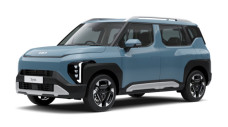


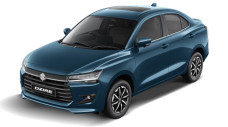
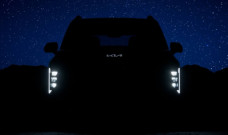

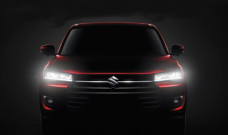
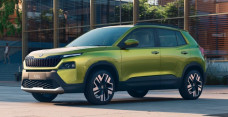

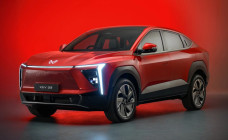

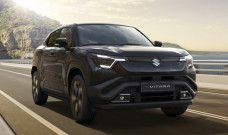
 Best cars under 25 lakh
Best cars under 25 lakh